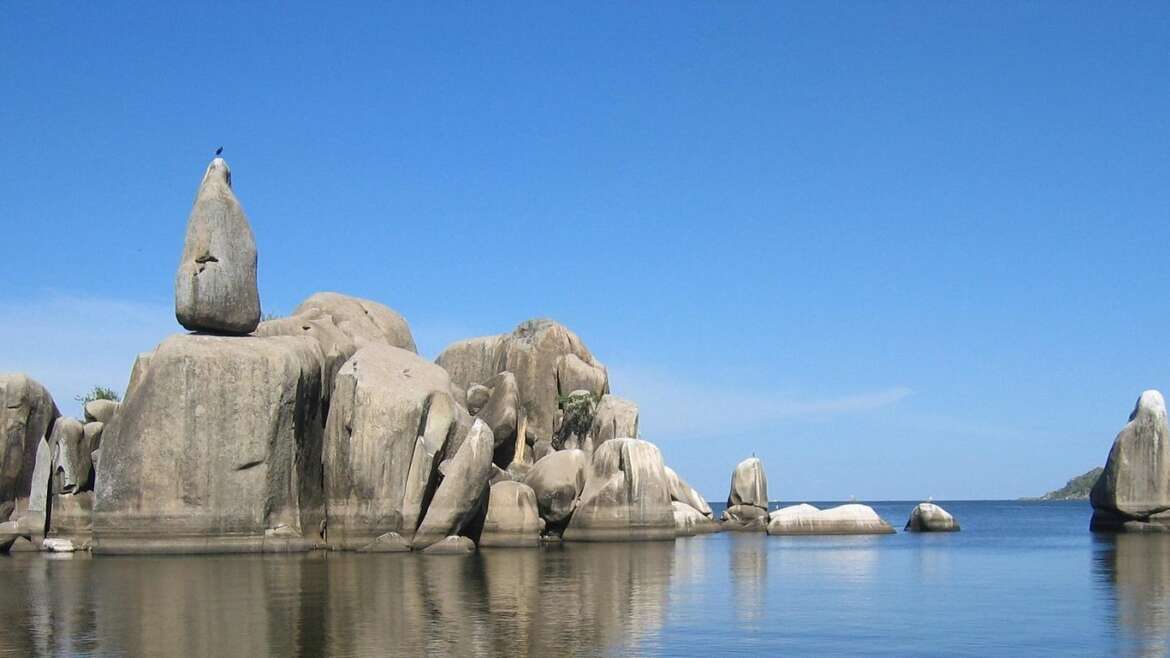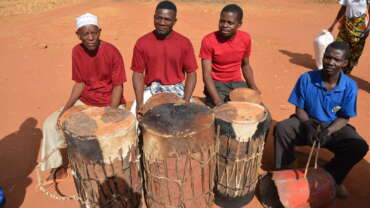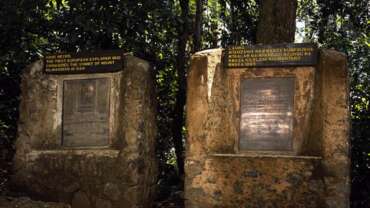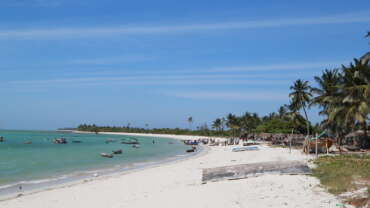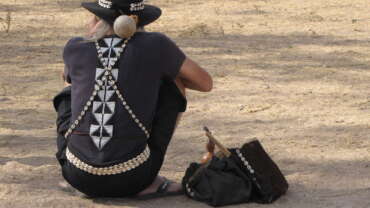Experience Tanzania with a difference!
Balloon safaris in Tanzania are a romantic and evocative way of experiencing the wilderness of East Africa, as you gracefully and silently fly over the plains teeming with herds of wild life in the early morning.
Typically, a ballon safari begins between 6 am and lasts for around 1-2 hours, during which you will likely see the magnificent wildlife below over several square kilometres of the game park. Ballon safaris are held regularly only in the Serengeti and take off from designated sites (in the Seronera area) where the disturbance to animals is kept to a minimum. Your safari vehicle drops you off at the take off site and picks you up from your landing site. The safari is followed by a champagne breakfast in the bush, a fitting end to your memorable flight in the wild.Maximum in a balloon
Cycling & Mountain Biking
A Tanzanian cycling safari is amazing because there are thousands of miles of single-track routes to explore, most of which are smooth, easy riding.
Tanzania biking tour offers diversity – a range of biking terrain combined with fantastic scenery! With plenty of National Parks and game drives, this tour offers the opportunity to see the Big Five, Mt Kilimanjaro, the Ngorongoro crater, The Usambara and Uluguru Mountains and the stunning beaches of Zanzibar.
Tanzania has stunning landscapes – from the slopes of Mt Kilimanjaro to the Rift Valley. This trip offers biking as it should be – off the beaten path and great fun!
Diving and Snorkeling
Tanzania offers divers world-class reefs and plentiful schools of tropical fish just offshore of the popular beaches and secluded locations.
Dive courses are offered at many of the hotels and lodges on the mainland coast as well as Zanzibar, Pemba and Mafia islands, and it is a rewarding skill to learn while on holiday, but the surface swimmer need not to despair since most of the reefs are accessible to snorkellers and equipment are easily rented from dive shops and lodges.
Diving can be done all year-round, however during the rains visibility can be limited.
Museum and Monuments
The National Museum of Tanzania is a consortium of five Tanzanian museums whose purpose is to preserve and show exhibits about the history and natural environment of Tanzania.
The consortium developed from the National Museum of Dar es Salaam, established in 1934 by Tanganyika governor Harold MacMichael. Four more museums later joined the consortium, namely the Village Museum in Dar es Salaam, the National History Museum and the Arusha Declaration Museum in Arusha, and the Mwalimu Julius K. Nyerere Memorial Museum in Butiama.
Dar es Salaam National Museum
The Dar es Salaam National Museum is located in Shabban Robert Street, next to the botanical gardens. Established in 1934 and open to the public since 1940, it was originally a memorial museum dedicated to King George V; one of the cars of the King is still on display. The museum was expanded in 1963, with the addition of a second building. It is now dedicated to the history of Tanzania. Its most famous exhibits include some bones of Paranthropus boisei that were among the findings of Louis Leakey at Olduvai. The museum also has a large section dedicated to the Shirazi city-state of Kilwa. More historical miscellaneous material is related to the German and British rule, and ancient Chinese pottery. The museum also has ethnographic collections on Tanzanian cultures.
Village Museum – A traditional hut in the Village Museum
The Kijiji cha Makumbusho, or Village Museum, established in 1996, is an open-air ethnographical museum located in the outskirts of Dar es Salaam, on the road to Mwenge and Bagamoyo. It showcases traditional huts from 16 different Tanzanian ethnic groups. There are also examples of traditional cultivations, and traditional music and dance shows are held daily.
National History Museum
The National History Museum in Arusha, open since 1987, is located in Arusha, in Boma Road. It has two permanent exhibits, respectively on human evolution and entomology.
Arusha Declaration Museum
The Arusha Declaration Museum, open since 1977, is located in Arusha, in Kaloleni Road. It displays documents on the colonial history of Tanzania, the fight for independence, and the Arusha Declaration where the first Tanzanian president Julius Nyerere outlined his political vision.
Nyerere Museum
The Mwalimu Julius K. Nyerere Memorial Museum, or Nyerere Museum for short, was established in 1999. It is located in Butiama, where Tanzania’s first president Julius Nyerere was born and was buried. The museum display items related to Nyerere’s personal and political life.
Shopping and Nightlife
Pick up African crafts and curios at the most popular tourist centres. Dar es Salaam, Arusha and Stone Town on Zanzibar are dotted with curio shops, markets and bazaars, as well as main roads near parks and reserves, and the coast roads behind beach resorts, all have plenty of roadside stalls.
Items to buy include African drums, batiks, basket-ware, soapstone knick-knacks, handmade chess sets, paintings of Maasai tribes and Serengeti landscapes in the popular Tingatinga style, and large wooden carvings of animals or salad bowls fashioned from a single piece of teak, mninga or ebony.
Maasai items such as beaded jewellery, decorated gourds and the distinctive red-checked blankets worn by all Maasai men make good souvenirs. Kangas and kikois are sarongs worn by women and men respectively and are often in bright colours and patterns. These are made into other items including clothes, cushion covers and bags. In Zanzibar, find old tiles, antique bowls and the famous carved wooden Zanzibar chests (once used by the Sultans to store their possessions, but today ornate replicas), and pick up packets of Zanzibar’s famous spices in Stone Town, as well as on a spice tour.
A Tanzanian specialty is the semi-precious stone called tanzanite, which ranges from deep blue to light purple and it is only found around Arusha. Tanzanite jewellery can be seen in upmarket curio and jewellery shops in Arusha, Dar es Salaam and Zanzibar’s Stone Town.
Whilst most prices in shops are set, the exception include the curio shops where a little good-natured bargaining is possible, especially if it’s quiet or you are buying a number of things. Bargaining is very much expected in the street markets.
Tinga Tinga
From the most humble of beginnings, Edward Saidi Tingatinga, the founder of the famous Tinga Tinga Art, born in 1932 in a tiny village called Namochelia in Mindu area, near the village of Nakapanya in the South of Tanzania slowly and subtlety began a movement in Tanzania that would subsequently revolutionize the way art in Tanzania would be made.
Tinga Tinga Art began as a simple idea: Use recycled, low-cost materials, like masonite squares, ceramic fragments, and bicycle paint.
His style was naïve, bordering on surrealistic and humorous; most of his subjects were stereotypical African icons, such as wildlife or savannah landscapes.
Edward’s Tingatinga’s paintings became very popular among European residents and tourists, and he was subsequently able to transition his previously part time job to a full time profession as an artist.



